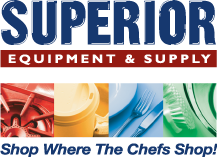Enhance Food Safety Using Kitchen Equipment
The issue of food safety within a restaurant chain has so many moving parts that it’s impossible to hold one specific component responsible for playing a more important role than others. One key player in overall kitchen hygiene and the safety of the food prepared there, however, is the equipment.
One of the biggest players in the business of producing kitchen equipment for food service is Wisconsin-based, Alto-Shaam. Since the 1950s, the Maahs family has been building the now international business around the use of warming and cooling equipment in the kitchen as a first-line defense in food safety.
QSRWeb recently chatted with one of the company’s longtime Culinary Institute chefs about what works and what doesn’t when it comes to using kitchen equipment effectively to protect and enhance food safety, while safeguarding flavor and appearance.
Chef Robert Simmelink, a 32-year veteran of food service, is responsible for culinary training, applications, and customer support, as well as research and development testing. He works with chefs across the nation regularly and gave us his read on the best ways to use kitchen equipment to enhance food safety.
Q: What are the biggest food safety concerns expressed by the clients you serve?
A: Our clients know they need to meet safety requirements in order to protect their guests and the restaurant group’s reputation. Everyone has food safety concerns. Everyone gets around it, but they don’t get around it in an efficient and effective way. It is a struggle for people to meet food safety that is advantageous to their labor and their food costs.
Q: What do kitchen equipment product developers consider to be the most critical food safety concerns for food service industry?
A: Our product developers look at how they can maximize holding times and reduce food waste. We ensure that our equipment is holding food at precise temperatures so that food is kept out of the danger zone.
Q: Is there one particularly longstanding and vexing problem that everyone in food service seems stymied by in keeping food safe when it comes to a workable solution?
A: Efficient use of resources remains a challenge for restaurants. We recommend a cook-chill system that allows restaurants to cook in bulk and rapidly reduce the food’s temperature in a blast chiller. Doing so can extend the shelf life by up to five days. Restaurants can quickly and safely bring the food back to temperature. This eliminates wasting food that hasn’t made it out of the danger zone in time.
Q: What kind of kitchen equipment products do you think go the furthest in protecting and even enhancing food safety in a restaurant kitchen?
A: The effect that everyone is trying to achieve is food that tastes fresh with limited labor. It is not just about chilling. It is also about cooking and the re-thermalization. That goes back to our systems approach: Cook it perfect, chill it perfect, and re-therm it perfect, using the right technology that makes the food taste fresh. The blast chiller ensures food safety and it ensures quality-tasting food. That is also how you are managing your labor. It takes the same amount of time to produce a large quantity of food as … a small quantity, yet now you are ahead of the game.

